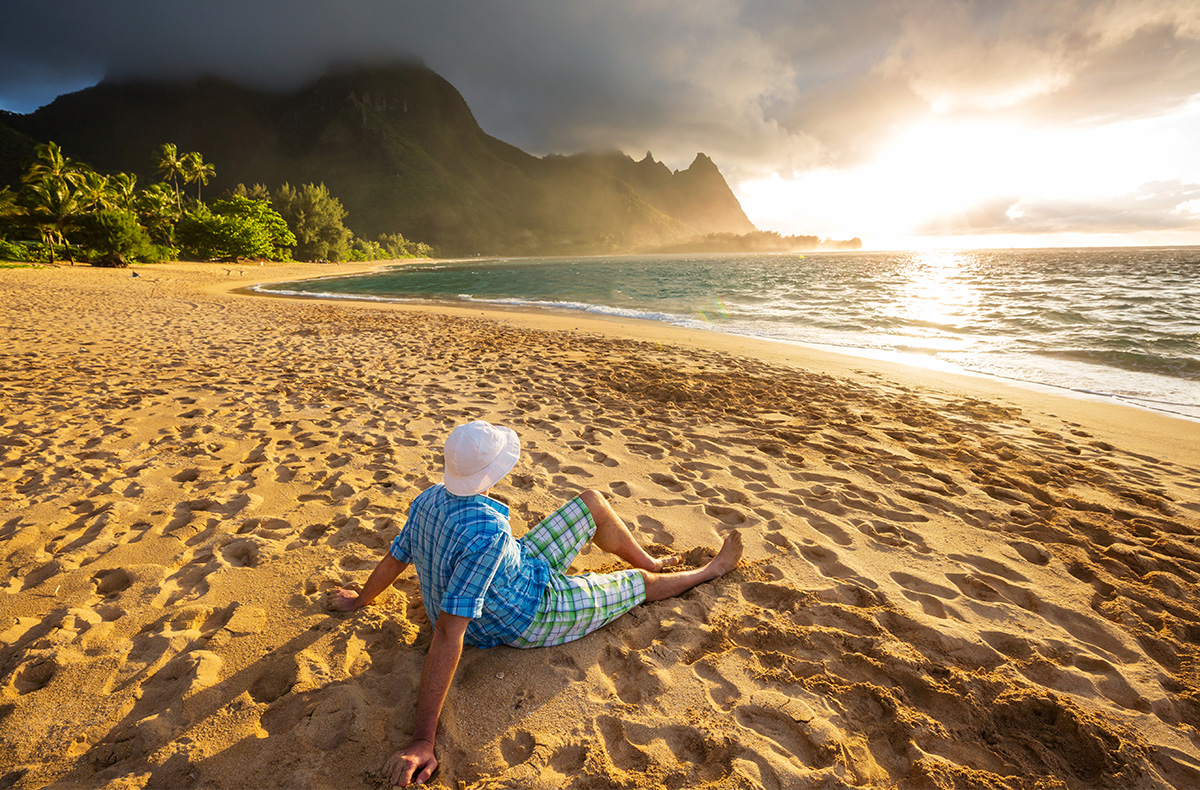Hawaii is known for good vibes, good waves, and a good deal of confusion over its language. It is one of the US’s few officially bilingual states, with English and Hawaiian of course being the official languages, but neither of those is the common language that actual Hawaiians and Hawaiian residents speak. The daily language is locally known as Pidgin, which is in fact not a pidgin language itself, but a full-blown creole language with its own native speakers. And for the icing on the confusion cake, Hawaii’s most famous word, the illustrious Aloha, not only means hello, goodbye, and a thousand other things, it transcends language and is in fact a way of life itself on the islands.
A Brief Look at Hawaii’s Tumultuous Past
If all of that seems a bit perplexing, it’s because the history of Hawaii itself has been anything but simple. Polynesians are believed to have been the first settlers, arriving by raft sometime around 300 AD. The Hawaiian language began to develop at this point in isolation, until European settlers began arriving in the late 1700s, notably renowned British explorer Captain James Cook. Cook tried to rename Hawaii “The Sandwich Islands” and was killed the following year.
Local pineapple and sugar industries began to flourish, and Hawaii became a common port of call in the Pacific, bringing an influx of people and workers from all over the world. Laborers from Portugal, the Philippines, Japan and a host of other countries arrived, all contributing to a pidgin Hawaiian language, which later morphed into a more English-based creole. The true Hawaiian language was even banned by the government in the late 1800s, with officials decreeing that only English could be used in schools. The Hawaiian influence was impossible to suppress, however, as seen in the Pidgin language spoken by Hawaiians today.
What does Hawaiian Pidgin sound like?
Pidgin is a strikingly beautiful language, as its cadence is markedly different from what we normally hear in English. That means that while most of the vocabulary and grammar structures are the same, everything comes out at a different rhythm. Vowel sounds are also elongated, a vestige of the vowel-heavy Hawaiian language, which only has seven consonants.
Pidgin Consonant Sounds
One of the first things you’re likely to note about consonants is that the “th” sound is replaced by “d.” That means “this and that” is “dis and dat.” Pidgin is also a non-rhotic language, meaning ending “-r’s” are dropped and “car” becomes “cah.” It’s similar to how they do it in Boston, yet at the same time not similar at all. So goes it with language.
Speaking Pidgin if you’re not Hawaiian
In Hawaii, respect is supremely important. Hawaiians and Hawaiian residents are very proud of their island, and want it treated with the respect it’s due. Speaking Pidgin if you’re not from there may be offensive to some, but more likely will simply get you laughed at if you try to go overboard with it. Aloha and Mahalo are the two exceptions, as they’ve passed into the common lexicon and are used commonly by locals and tourists alike.
So while it’s not a good idea to go heavy on the Pidgin lingo with locals you don’t know, learning and understanding common terms does in fact show respect. It indicates that you’re making an effort to understand the language and culture. As such, here are some important terms you will likely hear in Hawaiian Pidgin.
Hawaiian Pidgin Words to Know
Aloha
The word of a thousand meanings, people say “Aloha” for hello, goodbye, I love you, peace, and more. Broken down, “Alo-” means “the presence of” and “-ha” means “breath or life force.” This shows the spiritual aspect of it, and though the word has been co-opted by corporate marketing departments, it is still a very real thing for Hawaiians. If someone says it to you, you should say Aloha back.
Mahalo
This means “thank you,” and can and should be used frequently. Its meaning also shows the spirit of gratitude and aloha in Hawaiian culture
Braddah (Brah)
Brother, though probably not an actual sibling. It is similar to dude, man, brother, bro, etc., but pronounced with a deep “ahhh” sound
Howzit?
A truncated version of “How’s it going?”
Kook
A surf term that has spread to the wider world, this means a clueless individual who is doing things wrong and ruining it for others. It can also be a verb, as in “He’s kooking it so hard.”
Haole
This is used to refer to a foreigner from the mainland, usually a white person. The term is complicated, but not disrespectful offhand and is more of an identifier.
Talk story
To chop it up or shoot the breeze. This goes beyond just slang, however, and the importance of “talking story” with others is a big part of Hawaiian culture.
Da kine
This is what you say when you don’t know the word for something. It’s like a whatchamacallit, or in Philadelphia a “jawn.”
Grindz
Food or grub. “Let’s go to Pele’s and get some grindz!”
Shoots
This is used to reply to something in the affirmative, like saying “Okay then” or “Alright. Let’s do it.”
Hawaiian Sign Language Bonus
That thumb and pinky hand sign used by surfers the world over is known as a “Shaka” and legend has it that it originated on the islands of Hawaii. Sugar mill worker Hamana Kalili reportedly lost three of his fingers in an industrial accent, but not to be deterred, continued to wave at locals with his thumb and pinky. People started emulating his wave and it is now internationally recognized as “hang loose.” Throw one up if you’re in Hawaii!


